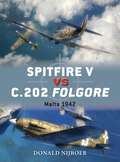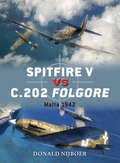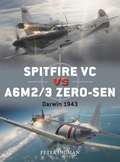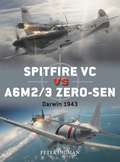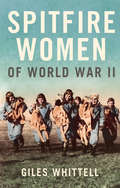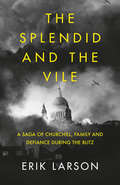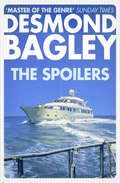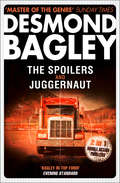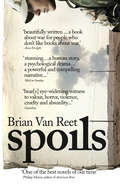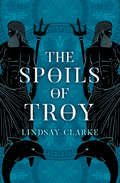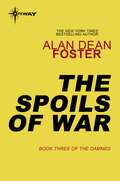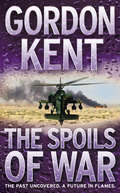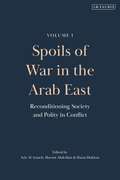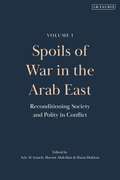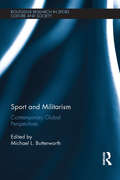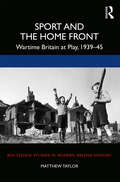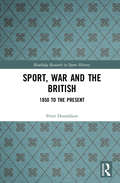- Table View
- List View
Spitfire V vs C.202 Folgore: Malta 1942 (Duel)
by Jim Laurier Gareth Hector Donald NijboerThe inability of the Italians and Germans to invade Malta proved decisive for Allied victory in the Mediterranean during World War II, as the islands provided the Allies with a base from which to project air power. Early Italian efforts to pound the islands into submission were supplemented by major German forces from January 1942 and in a few weeks the situation for the defenders reached a critical stage; in response, in March 1942 the first Spitfires were delivered to Malta. Throughout the summer C.202s fought over Malta, escorting tiny formations of Cant Z.1007s, SM.79s and Ju 88s. The fighting subsided in August and September, but grew in strength with the arrival of more C.202s. In October the Regia Aeronautica could muster three Gruppi with a total of 74 C.202s. For ten days the Italians pressed a relentless attack before attrition brought the offensive to a halt. Throughout the bombing campaign the British were able to supply Malta with ever increasing numbers of Spitfires.
Spitfire V vs C.202 Folgore: Malta 1942 (Duel #60)
by Jim Laurier Gareth Hector Donald NijboerThe inability of the Italians and Germans to invade Malta proved decisive for Allied victory in the Mediterranean during World War II, as the islands provided the Allies with a base from which to project air power. Early Italian efforts to pound the islands into submission were supplemented by major German forces from January 1942 and in a few weeks the situation for the defenders reached a critical stage; in response, in March 1942 the first Spitfires were delivered to Malta. Throughout the summer C.202s fought over Malta, escorting tiny formations of Cant Z.1007s, SM.79s and Ju 88s. The fighting subsided in August and September, but grew in strength with the arrival of more C.202s. In October the Regia Aeronautica could muster three Gruppi with a total of 74 C.202s. For ten days the Italians pressed a relentless attack before attrition brought the offensive to a halt. Throughout the bombing campaign the British were able to supply Malta with ever increasing numbers of Spitfires.
Spitfire VC vs A6M2/3 Zero-sen: Darwin 1943 (Duel)
by Peter IngmanJust weeks after Pearl Harbor, Darwin was mauled by a massive Japanese attack. Without a single fighter to defend Australian soil, the Australian government made a special appeal to Britain for Spitfires. A year later the Spitfire VC-equipped No 1 Fighter Wing, RAAF, faced the battle-hardened 202nd Kokutai of the IJNAF, equipped with A6M2 Zero-sens, over Darwin. This was a gruelling campaign between evenly matched foes, fought in isolation from the main South Pacific battlegrounds. Pilots on either side had significant combat experience, including a number of Battle of Britain veterans. The Spitfire had superior flight characteristics but was hampered by short range and material defects in the tropical conditions, while the Japanese employed better tactics and combat doctrine inflicting serious losses on the over-confident Commonwealth forces. Fully illustrated with detailed full-colour artwork, this is the gripping story of two iconic aircraft facing off against each other above Australia.
Spitfire VC vs A6M2/3 Zero-sen: Darwin 1943 (Duel)
by Peter IngmanJust weeks after Pearl Harbor, Darwin was mauled by a massive Japanese attack. Without a single fighter to defend Australian soil, the Australian government made a special appeal to Britain for Spitfires. A year later the Spitfire VC-equipped No 1 Fighter Wing, RAAF, faced the battle-hardened 202nd Kokutai of the IJNAF, equipped with A6M2 Zero-sens, over Darwin. This was a gruelling campaign between evenly matched foes, fought in isolation from the main South Pacific battlegrounds. Pilots on either side had significant combat experience, including a number of Battle of Britain veterans. The Spitfire had superior flight characteristics but was hampered by short range and material defects in the tropical conditions, while the Japanese employed better tactics and combat doctrine inflicting serious losses on the over-confident Commonwealth forces. Fully illustrated with detailed full-colour artwork, this is the gripping story of two iconic aircraft facing off against each other above Australia.
Spitfire vs Bf 109: Battle of Britain (Duel)
by Tony HolmesChurchill's words, 'never was so much owed by so many to so few', came to encapsulate how, in a few critical months, the entire fate of the British Empire, if not the war, hung in the balance, to be determined by a handful of pilots fighting tirelessly in the skies over Britain. Tony Holmes describes the Battle of Britain, the clash between the Spitfire I/II and the Bf 109E - detailing not only the key elements of both aircraft types - the airframe, engine, armament and flying characteristics, but also the pilots' training and tactics accompanied by diagrams of actual flight formations. The growing influence of radar and the efforts of British air defences are also examined, as are real-life engagements - from both German and British perspectives. With a wealth of first-hand accounts from the veterans who strapped themselves into these legendary machines as well as illustrations and cockpit-view artwork, this book puts the reader in the midst of a dogfight, providing a unique insight into one of the greatest duels of history in the world's first major aerial battle.
Spitfire vs Bf 109: Battle of Britain (Duel)
by Tony HolmesChurchill's words, 'never was so much owed by so many to so few', came to encapsulate how, in a few critical months, the entire fate of the British Empire, if not the war, hung in the balance, to be determined by a handful of pilots fighting tirelessly in the skies over Britain. Tony Holmes describes the Battle of Britain, the clash between the Spitfire I/II and the Bf 109E - detailing not only the key elements of both aircraft types - the airframe, engine, armament and flying characteristics, but also the pilots' training and tactics accompanied by diagrams of actual flight formations. The growing influence of radar and the efforts of British air defences are also examined, as are real-life engagements - from both German and British perspectives. With a wealth of first-hand accounts from the veterans who strapped themselves into these legendary machines as well as illustrations and cockpit-view artwork, this book puts the reader in the midst of a dogfight, providing a unique insight into one of the greatest duels of history in the world's first major aerial battle.
Spitfire Women of World War II
by Giles WhittellThis is the incredible true story of a wartime sisterhood of women pilots: a group of courageous pioneers who took exceptional risks to fly Spitfires, Hurricanes and Lancasters to the frontlines of World War II.
The Splendid and the Vile: A Saga Of Churchill, Family, And Defiance During The Blitz
by Erik LarsonTHE #1 NEW YORK TIMES BESTSELLER ‘There are countless books about World War II, but there’s only one Erik Larson … The book reads like a novel, and even though everyone (hopefully) knows how the war ultimately ended, he keeps the reader turning the pages with his gripping prose’ NPR
Splinter Cell
by Don PendletonAVENUE OF ATTACK The disappearance of a tourist in Amsterdam is attributed to a rise in kidnappings of Westerners by terrorists. But those inside U.S. Intelligence know better. The hostage is a top American nuclear expert.
The Splintered Empires: The Eastern Front 1917–21
by Prit ButtarAt the beginning of 1917, the three empires fighting on the Eastern Front were reaching their breaking points, but none was closer than Russia. After the February Revolution, Russia's ability to wage war faltered and her last desperate gamble, the Kerensky Offensive, saw the final collapse of her army. This helped trigger the Bolshevik Revolution and a crippling peace, but the Central Powers had no opportunity to exploit their gains and, a year later, both the German and Austro-Hungarian empires surrendered and disintegrated.Concluding his acclaimed series on the Eastern Front in World War I, Prit Buttar comprehensively details not only these climactic events, but also the 'successor wars' that raged long after the armistice of 1918. New states rose from the ashes of empire, and war raged as German forces sought to keep them under the aegis of the Fatherland. These unresolved tensions between the former Great Powers and the new states would ultimately lead to the rise of Hitler and a new, terrible world war only two decades later.
The Splintered Empires: The Eastern Front 1917–21
by Prit ButtarAt the beginning of 1917, the three empires fighting on the Eastern Front were reaching their breaking points, but none was closer than Russia. After the February Revolution, Russia's ability to wage war faltered and her last desperate gamble, the Kerensky Offensive, saw the final collapse of her army. This helped trigger the Bolshevik Revolution and a crippling peace, but the Central Powers had no opportunity to exploit their gains and, a year later, both the German and Austro-Hungarian empires surrendered and disintegrated.Concluding his acclaimed series on the Eastern Front in World War I, Prit Buttar comprehensively details not only these climactic events, but also the 'successor wars' that raged long after the armistice of 1918. New states rose from the ashes of empire, and war raged as German forces sought to keep them under the aegis of the Fatherland. These unresolved tensions between the former Great Powers and the new states would ultimately lead to the rise of Hitler and a new, terrible world war only two decades later.
The Spoilers
by Desmond BagleyAction thriller by the classic adventure writer set in the Middle East.
The Spoilers / Juggernaut
by Desmond BagleyDouble action thrillers by the classic adventure writer set in the Middle East and Africa.
Spoils
by Brian Van Reet*WINNER OF THE WRITERS' LEAGUE OF TEXAS FICTION AWARD 2017*It is the spring of 2003 and coalition forces are advancing on Iraq. Images of a giant statue of Saddam Hussein crashing to the ground in Baghdad are being beamed to news channels around the world. Nineteen-year-old Specialist Cassandra Wigheard, on her first deployment since joining the US army two years earlier, is primed for war.For Abu al-Hool, a jihadist since the days of the Soviet occupation of Afghanistan, war is wearing thin. Two decades of fighting have left him questioning his commitment to the struggle. When Cassandra is taken prisoner by al-Hool’s mujahideen brotherhood, both fighters will find their loyalties tested to the very limits.
The Spoils of Troy (The Troy Quartet #3)
by Lindsay ClarkePART THREE OF THE TROY QUARTET Bringing ancient myth to life with passion, humour, and humanity, Lindsay Clarke vividly retells the story of Troy and of the heroes who fought there.
The Spoils of War: 3 (Damned #Bk. 3)
by Alan Dean FosterAfter millennia of relentless war, the union of alien races called the Weave was on the verge of winning a decisive victory - thanks to their new allies from Earth, who in a mere handful of centuries had proved masters of combat. But then the birdlike Wais scholar Lalelelang found disturbing evidence that Humans might not adapt so easily to peace - that natural Human aggression would next be turned against the Weave, unless they were once again confined to fight amongst themselves.When her field research revealed the existence of a secret group of powerfully telepathic Humans called the Core, it looked as if Lalelelang would be the first victim in a new war between Humans and their allies. But just as her fate was sealed, a lone Core commander took a chance on her intelligence and compassion, gambling the fate of Humanity on the possibility that together they could both find an alternative to a galaxy-wide bloodbath...
The Spoils of War
by Gordon KentAn exhilarating tale of modern espionage and adventure featuring US Navy intelligence officer Alan Craik.
Spoils of War in the Arab East: Reconditioning Society and Polity in Conflict
by Spoils of War in the Arab East: Reconditioning Society and Polity in Conflict Aziz Al-Azmeh Harout Akdedian Haian DukhanPost-conflict scenarios are often proposed for Arab countries that have witnessed significant changes and civil wars. Yet the plans for reconciliation, transitional justice, and the return of the displaced often overlook the real conditions that make these recommendations impossible. This book provides a critical analysis of current post-conflict frameworks for Syria and Iraq. Drawing on empirical research, the book shows that reconciliation and reconstruction scenarios need to be considered alongside the realities on the ground. It argues that Iraq and Syria exist in a condition of 'conflict transformation' rather than of 'conflict termination', because the extreme changes that accompanied these countries into war continue long after the conflicts end. Furthermore, the chapters highlight why experts should not seek solutions in culturalist terms and ancestral enmities, or rely on the wartime status quo. Rather, they should look to the specific military, political, economic and socio-cultural conditions that require different solutions. A critical analysis of existing post-conflict frameworks, their applicability and their potential outcomes in Iraq and Syria, the book is a vital contribution to post-conflict studies. It highlights the need for new approaches to reconstruction and peacebuilding in Arab countries and points to how they should be found.
Spoils of War in the Arab East: Reconditioning Society and Polity in Conflict
Post-conflict scenarios are often proposed for Arab countries that have witnessed significant changes and civil wars. Yet the plans for reconciliation, transitional justice, and the return of the displaced often overlook the real conditions that make these recommendations impossible. This book provides a critical analysis of current post-conflict frameworks for Syria and Iraq. Drawing on empirical research, the book shows that reconciliation and reconstruction scenarios need to be considered alongside the realities on the ground. It argues that Iraq and Syria exist in a condition of 'conflict transformation' rather than of 'conflict termination', because the extreme changes that accompanied these countries into war continue long after the conflicts end. Furthermore, the chapters highlight why experts should not seek solutions in culturalist terms and ancestral enmities, or rely on the wartime status quo. Rather, they should look to the specific military, political, economic and socio-cultural conditions that require different solutions. A critical analysis of existing post-conflict frameworks, their applicability and their potential outcomes in Iraq and Syria, the book is a vital contribution to post-conflict studies. It highlights the need for new approaches to reconstruction and peacebuilding in Arab countries and points to how they should be found.
Sport and Militarism: Contemporary global perspectives (Routledge Research in Sport, Culture and Society)
by Michael L. ButterworthThe institutional relationship between sport and the military appears to be intensifying. In the US for example, which faced global criticism for its foreign policy during the "war on terror," militaristic images are commonplace at sporting events. The growing global phenomenon of conflating sport with war calls for closer analysis. This critical, interdisciplinary and international book seeks to identify intersections of sport and militarism as a means to interrogate, interrupt and intervene on behalf of democratic, peaceful politics. Viewing sport as a crucial site in which militarism is made visible and legitimate, the book explores the connections between sport, the military and the state, and their consequent impact on wider culture. Featuring case studies on sports such as association football, baseball and athletics from countries including the US, UK, Germany, Canada, South Africa, Brazil and Japan, each chapter sheds new light on the shifting significance of sport in our society. This book is fascinating reading for all those interested in sport and politics, the sociology of sport, communication studies, the ethics and philosophy of sport, or military sociology.
Sport and Militarism: Contemporary global perspectives (Routledge Research in Sport, Culture and Society)
by Michael L. ButterworthThe institutional relationship between sport and the military appears to be intensifying. In the US for example, which faced global criticism for its foreign policy during the "war on terror," militaristic images are commonplace at sporting events. The growing global phenomenon of conflating sport with war calls for closer analysis. This critical, interdisciplinary and international book seeks to identify intersections of sport and militarism as a means to interrogate, interrupt and intervene on behalf of democratic, peaceful politics. Viewing sport as a crucial site in which militarism is made visible and legitimate, the book explores the connections between sport, the military and the state, and their consequent impact on wider culture. Featuring case studies on sports such as association football, baseball and athletics from countries including the US, UK, Germany, Canada, South Africa, Brazil and Japan, each chapter sheds new light on the shifting significance of sport in our society. This book is fascinating reading for all those interested in sport and politics, the sociology of sport, communication studies, the ethics and philosophy of sport, or military sociology.
Sport and the Home Front: Wartime Britain at Play, 1939-45 (Routledge Studies in Modern British History)
by Matthew TaylorSport and the Home Front contributes in significant and original ways to our understanding of the social and cultural history of the Second World War. It explores the complex and contested treatment of sport in government policy, media representations and the everyday lives of wartime citizens. Acknowledged as a core component of British culture, sport was also frequently criticised, marginalised and downplayed, existing in a constant state of tension between notions of normality and exceptionality, routine and disruption, the everyday and the extraordinary. The author argues that sport played an important, yet hitherto neglected, role in maintaining the morale of the British people and providing a reassuring sense of familiarity at a time of mass anxiety and threat. Through the conflict, sport became increasingly regarded as characteristic of Britishness; a symbol of the ‘ordinary’ everyday lives in defence of which the war was being fought. Utilised to support the welfare of war workers, the entertainment of service personnel at home and abroad and the character formation of schoolchildren and young citizens, sport permeated wartime culture, contributing to new ways in which the British imagined the past, present and future. Using a wide range of personal and public records – from diary writing and club minute books to government archives – this book breaks new ground in both the history of the British home front and the history of sport.
Sport and the Home Front: Wartime Britain at Play, 1939-45 (Routledge Studies in Modern British History)
by Matthew TaylorSport and the Home Front contributes in significant and original ways to our understanding of the social and cultural history of the Second World War. It explores the complex and contested treatment of sport in government policy, media representations and the everyday lives of wartime citizens. Acknowledged as a core component of British culture, sport was also frequently criticised, marginalised and downplayed, existing in a constant state of tension between notions of normality and exceptionality, routine and disruption, the everyday and the extraordinary. The author argues that sport played an important, yet hitherto neglected, role in maintaining the morale of the British people and providing a reassuring sense of familiarity at a time of mass anxiety and threat. Through the conflict, sport became increasingly regarded as characteristic of Britishness; a symbol of the ‘ordinary’ everyday lives in defence of which the war was being fought. Utilised to support the welfare of war workers, the entertainment of service personnel at home and abroad and the character formation of schoolchildren and young citizens, sport permeated wartime culture, contributing to new ways in which the British imagined the past, present and future. Using a wide range of personal and public records – from diary writing and club minute books to government archives – this book breaks new ground in both the history of the British home front and the history of sport.
Sport, War and the British: 1850 to the Present (Routledge Research in Sports History)
by Peter DonaldsonSpanning the colonial campaigns of the Victorian age to the War on Terror after 9/11, this study explores the role sport was perceived to have played in the lives and work of military personnel, and examines how sporting language and imagery were deployed to shape and reconfigure civilian society’s understanding of conflict. From 1850 onwards war reportage – complemented and reinforced by a glut of campaign histories, memoirs, novels and films – helped create an imagined community in which sporting attributes and qualities were employed to give meaning and order to the chaos and misery of warfare. This work explores the evolution of the Victorian notion that playing-field and battlefield were connected and then moves on to investigate the challenges this belief faced in the twentieth century, as combat became, initially, industrialised in the age of total warfare and, subsequently, professionalised in the post-nuclear world. Such a longitudinal study allows, for the first time, new light to be shed on the continuities and shifts in the way the ‘reality’ of war was captured in the British popular imagination. Drawing together the disparate fields of sport and warfare, this book serves as a vital point of reference for anyone with an interest in the cultural, social or military history of modern Britain.
Sport, War and the British: 1850 to the Present (Routledge Research in Sports History)
by Peter DonaldsonSpanning the colonial campaigns of the Victorian age to the War on Terror after 9/11, this study explores the role sport was perceived to have played in the lives and work of military personnel, and examines how sporting language and imagery were deployed to shape and reconfigure civilian society’s understanding of conflict. From 1850 onwards war reportage – complemented and reinforced by a glut of campaign histories, memoirs, novels and films – helped create an imagined community in which sporting attributes and qualities were employed to give meaning and order to the chaos and misery of warfare. This work explores the evolution of the Victorian notion that playing-field and battlefield were connected and then moves on to investigate the challenges this belief faced in the twentieth century, as combat became, initially, industrialised in the age of total warfare and, subsequently, professionalised in the post-nuclear world. Such a longitudinal study allows, for the first time, new light to be shed on the continuities and shifts in the way the ‘reality’ of war was captured in the British popular imagination. Drawing together the disparate fields of sport and warfare, this book serves as a vital point of reference for anyone with an interest in the cultural, social or military history of modern Britain.
